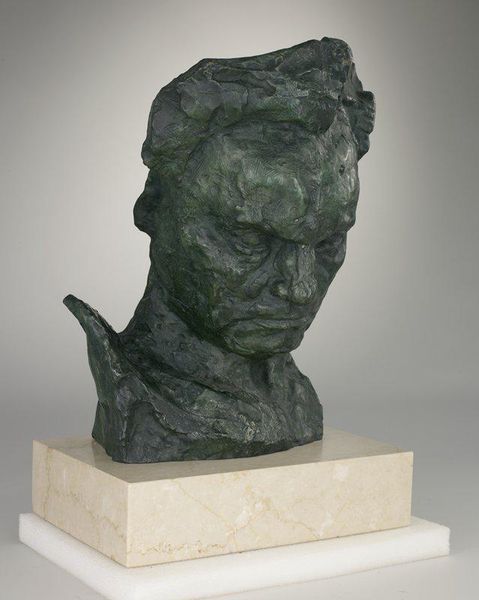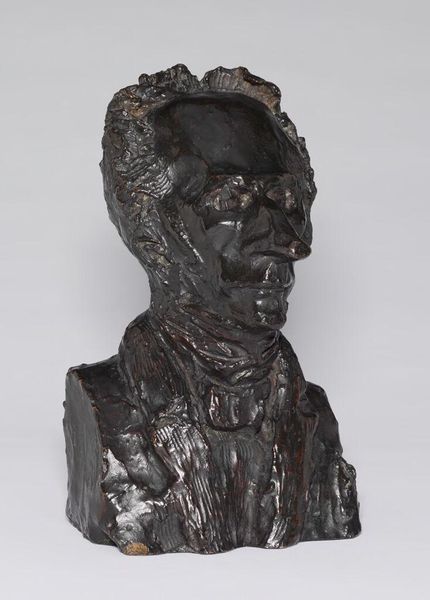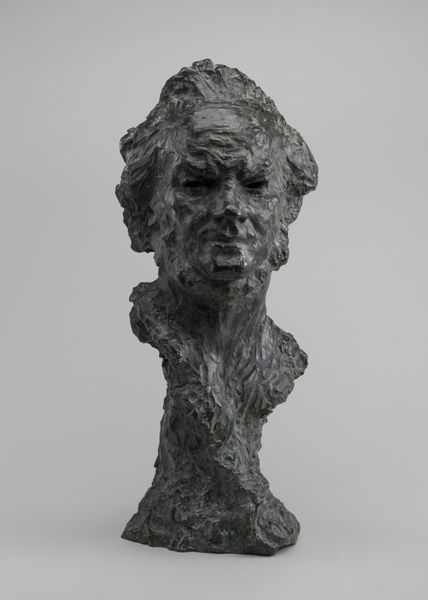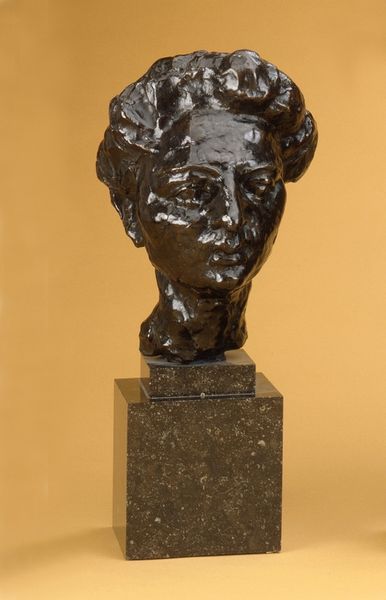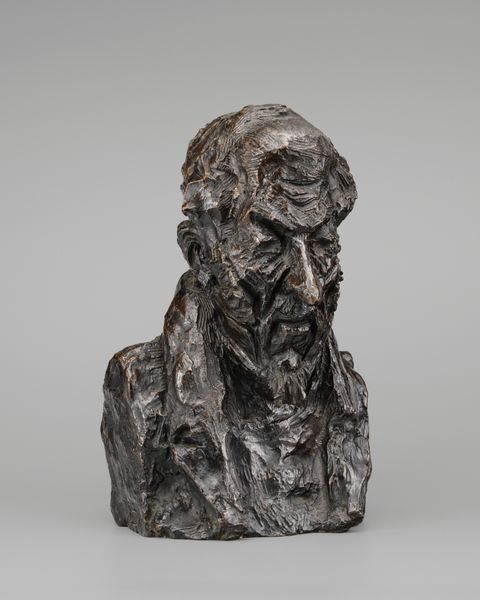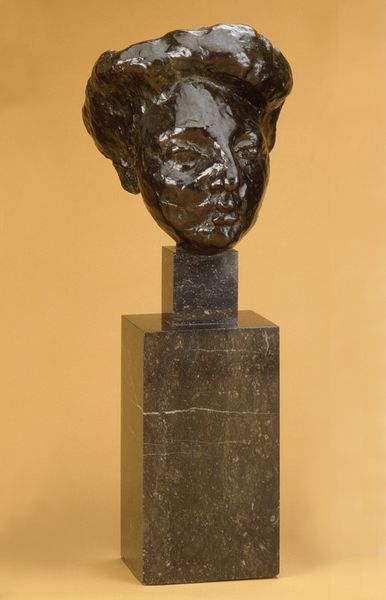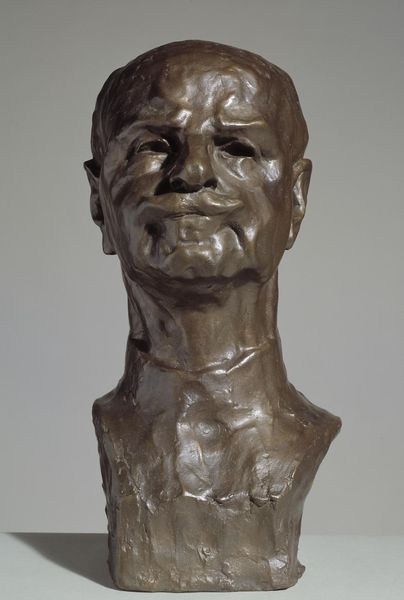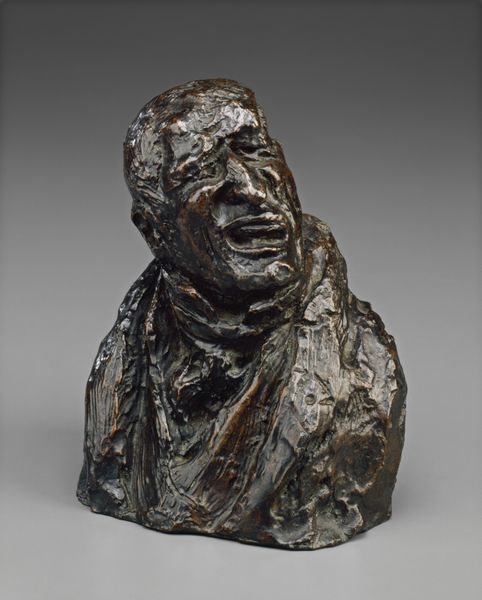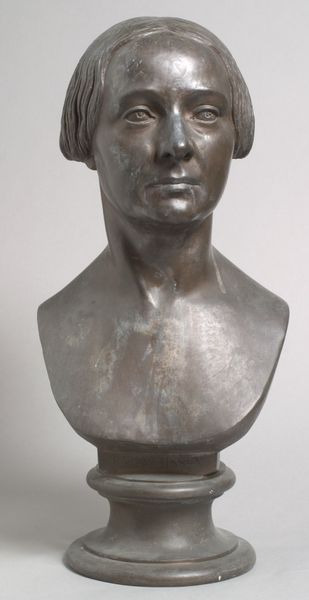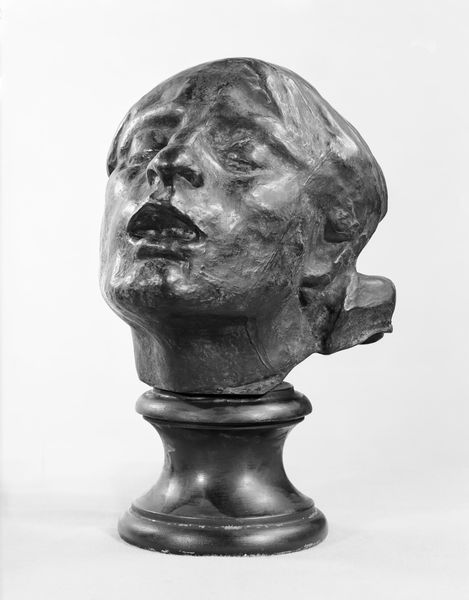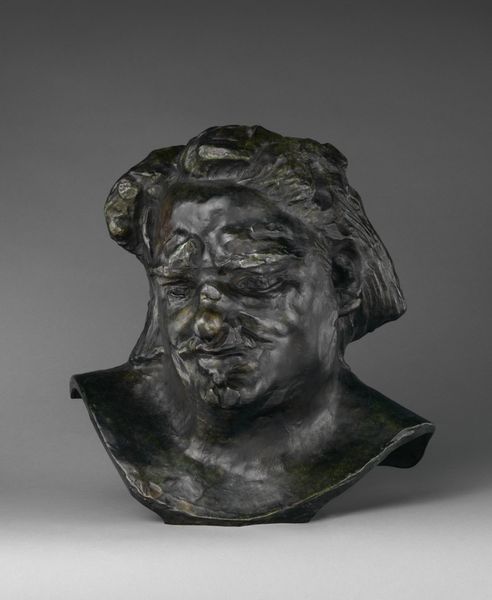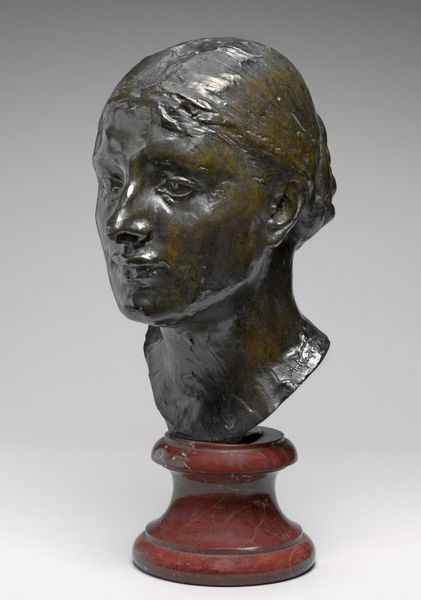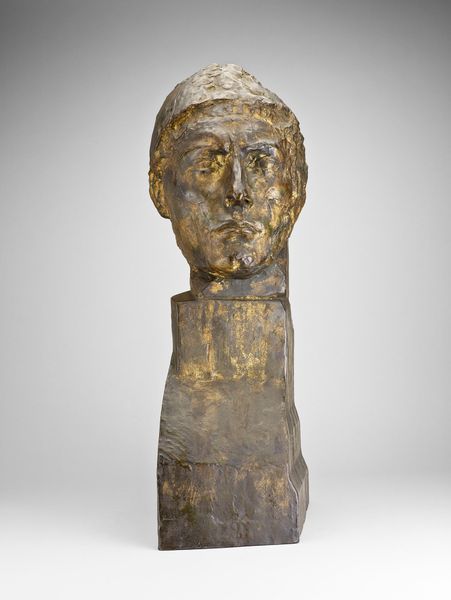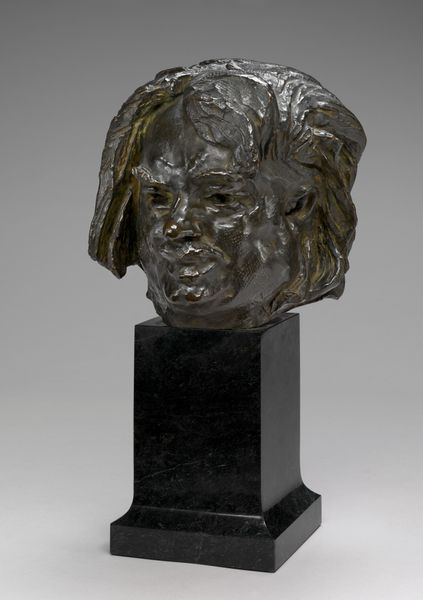
bronze, sculpture
#
portrait
#
cubism
#
sculpture
#
bronze
#
sculpting
#
sculpture
Dimensions: overall: 41.2 x 20.5 x 25.5 cm (16 1/4 x 8 1/16 x 10 1/16 in.)
Copyright: National Gallery of Art: CC0 1.0
Curator: Here we have Picasso's bronze sculpture, "Head of a Woman (Fernande)," dating from before 1932. What strikes you immediately about this piece? Editor: The angular planes! They remind me of cut gems. There is a captivating tension in how those facets both dissect and reconstruct her likeness. Curator: Indeed. Viewing the processes involved—Picasso modeling the original clay, the plaster mold, and finally, the bronze casting—helps understand the dynamic shifts from malleable form to fixed object. Considering this, the distortions take on a new meaning. It isn’t merely abstract; it is a recording of the transformation of labor and material. Editor: I see it slightly differently. The interplay between light and shadow on the bronze surface is masterful, transforming a static material into something that feels alive, in constant dialogue with the changing environment and also consider that bronze’s reflective quality draws our eye to specific areas, playing up the sculpture’s structure, its formal anatomy. Curator: But also consider, Editor, the historical implications. The labor was likely divided, involving artisans at a foundry who took on different stages. The industrial aspects influence the perception and valuation of such 'high art,' doesn't it? Editor: Perhaps, yet the formal tensions remain. I keep circling back to those shadowed recesses near the mouth. It gives Fernande this impenetrable, unknowable expression. Despite the fragmentation, there’s still this essence of a human psyche captured through carefully organized lines. Curator: To me, it is an artwork that speaks about the processes inherent in creation, reproduction and recontextualization. Editor: And for me, the aesthetic tension is what brings the subject to life! Well, it is up to the observer. Thank you for discussing art, as always. Curator: My pleasure, the pleasure is all mine. Let us continue, after a brief pause.
Comments
No comments
Be the first to comment and join the conversation on the ultimate creative platform.
